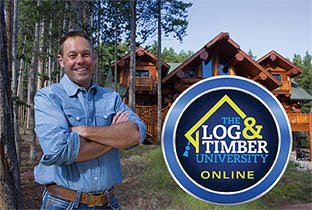
Increase your new or existing home's energy efficiency and save money with these 5 steps.
Windows
Many newer homes are known for their walls of windows and dormers. But with all that glass comes more opportunity for heat loss, which can result in higher heating and cooling costs. South-facing windows with large roof overhangs are a good solution to this problem.
During the winter, the windows will let in sunlight, warming your home and reducing your need for heat. And during the summer, when the sun is higher in the sky, the overhangs will block the powerful rays so you won’t need to blast the AC all season long. Of course, these design tricks won’t help much if your windows and doors themselves are leaking.
When making your selection, look for products with a low U-factor (a rating of how energy efficient a window is), a low air leakage rating and a frame made of fiberglass or composite wood for the best insulating properties.
Water Heaters
Choosing a water heater might not be the most exciting part of building your home, but new technologies have created versions that save you money in operating costs and always have hot water at the ready — say goodbye to cold showers!
Tankless water heaters are priced similarly to standard water heaters, but their size and technology are completely different. They’re so compact, they can fit in a small closet mounted to a wall. And rather than constantly heating water, a tankless model only heats water as it’s needed, providing an unlimited source of efficiently produced hot water.
Compact Fluorescent Lamps
One of easiest ways to reduce your electrical output? Use compact fluorescent lamps (or CFLs). They can replace the traditional incandescent bulbs in most light fixtures, including outdoor lights, lamps and specialty fixtures. While they cost more, they last much longer and use less electricity than incandescents.
In fact, the lifespan of one CFL is 4.5 years — and in that amount of time, each fixture with a compact fluorescent will save you about $60. Imagine the savings if you used them for all of your lighting!
Plumbing Fixtures
Even if you stick with a standard water heater, there are ways to cut back on your water usage. Think about using low-consumption plumbing fixtures (faucets, showerheads and toilets) in your home. By law, all new toilets must use a maximum of 1.6 gallons per flush (this is compared to older models, which can use up to 5 gallons per flush).
But you can save even more water, and therefore more money, by purchasing a high-efficiency, 1.28-gallon-per-flush toilet. Also, look for showerheads and faucets that have aerators — screw-on tips that greatly reduce the water flow but not the pressure.
Geothermal Heat Pumps
If you can work it into your budget, a geothermal heat pump can add up to dramatic savings. This type of system can cost as much as $7,000 more than a traditional whole-house heating system, but experts estimate the pump pays for itself in as little as three years. How it works: It’s installed underground, where a series of pipes collects hot and cold air from below the Earth’s surface.
That air is then circulated into the home — no other type of furnace or air conditioning is needed. Another option is buying a dual-source heat pump that uses both standard and geothermal technology. They aren’t as efficient as geothermal heat pumps, but they cost less upfront.











